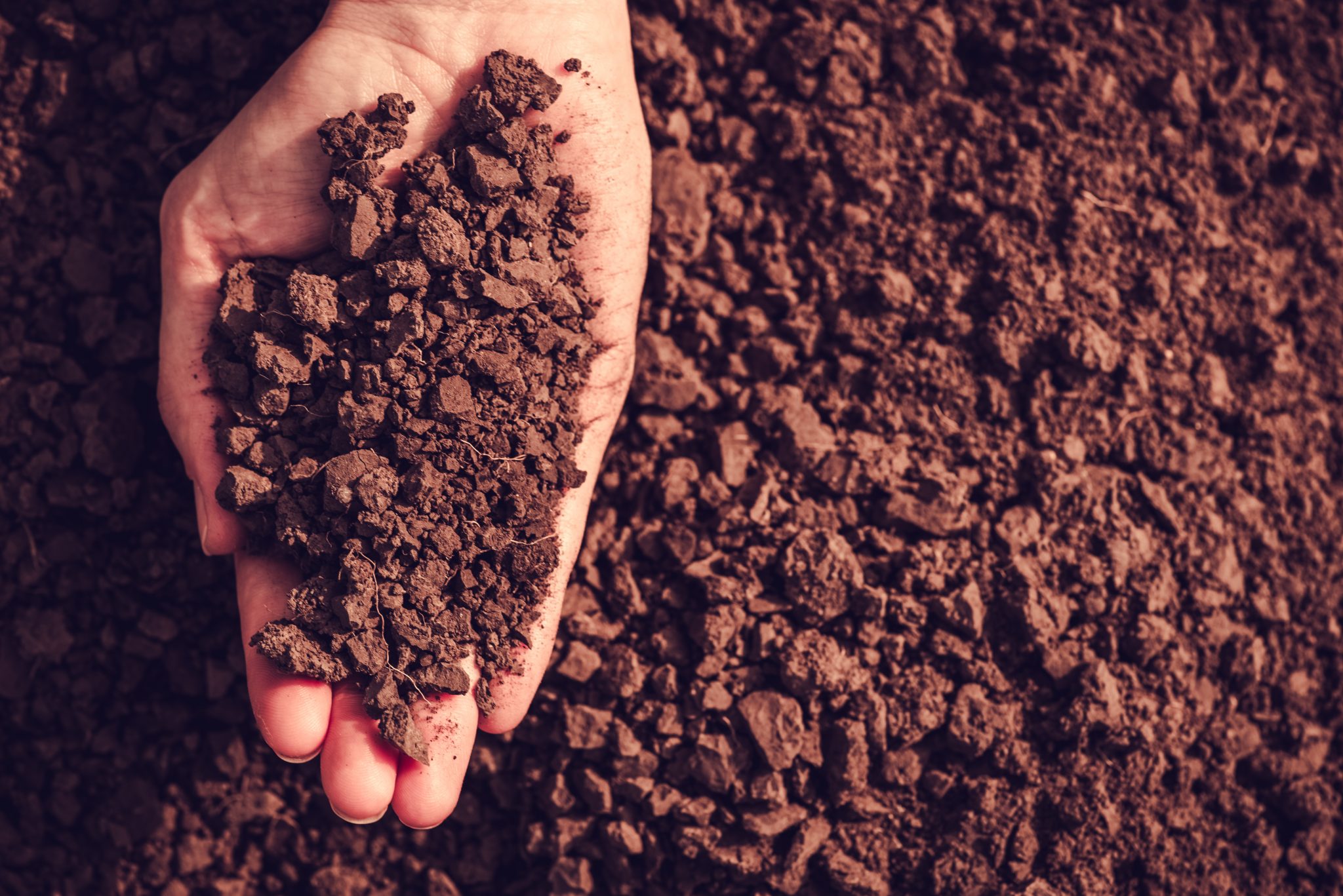Healthy Soils

Why Practice Soil Conservation?
Soil conservation is an important part of conservation cropping systems. There are many benefits for producers who choose to employ soil conservation practices on-farm.
Increased Profits:
- Yields are equal to or greater than traditional tillage.
- Reduce use of fuel and labor.
- Requires less time.
- Lower machinery repair and maintenance costs.
- Potential reduction in fertilizer and herbicide costs.
Improved Environment:
- Improved soil quality and productivity.
- Reduced erosion.
- Increased water infiltration and storage.
- Improved air and water quality.
- Provides food and shelter for wildlife.
Soil Forming Factors
- Parent material—the rocks and deposits that formed the soil.
- The climate where the soils developed.
- Living organisms that changed the soils.
- The topography or slope of the land.
- The length of geological time the soils have been developing (age of the soil).
Properties of a Healthy Soil
- High organic matter content.
- Optimal nutrients and pH for plant growth.
- Stable aggregates to promote water infiltration.
- Large population of beneficial organisms.
- No compaction layers.
- No contamination.
Many soils in Alabama have low levels of soil organic matter due to the warm climate, coarse-textured soils and intensive farming practices historically used in the state. Rebuilding soil health is important! Soil is a natural resource we must work to conserve for future generations. Practices such as reduced tillage and cover cropping can increase organic matter and improve soil health. There are several important ways producers can improve soil health.
Practices to Improve Soil Health
- Provide a cover to the soil. Bare soil is susceptible to wind and water erosion. Cover crops help protect soil from erosion and helps to build soil organic matter when cash crops are not actively growing. Cover crops can also supply plant nutrients, regulate soil temperature, improve soil structure, and suppress weeds.
- Disturb soil less. Tillage disrupts soil aggregates and increases risk of soil compaction. (Soil aggregates are groups of soil particles which are more strongly bound to one another than adjacent soil particles.) Stable soil aggregates help to prevent soil erosion. Aggregates also provide pore space for water and air to enter the soil, allowing plant roots to grow.) Compaction can hinder root growth and decrease production on agricultural soils. Tillage also speeds up the breakdown of soil organic matter. Reducing tillage can help prevent runoff, increase soil organic matter, and reduce erosion.
- Increase plant diversity. Different plants can provide a variety of different benefits to the soil. Increasing plant diversity through crop rotation can also help break pest cycles.
- Keep an active crop growing. Actively growing plants secrete sugars, organic acids, and other compounds that provide a good source for soil microorganisms. The area around plants is called the rhizosphere. This area contains the highest concentration of microorganisms in the soil. By keeping an actively growing crop in the soil, microorganisms can recycle nutrients to promote healthy soil.
Measuring Soil Health
Changes in soil health happen over time. Therefore, measuring soil health is challenging. However, scientists can use tests to assess soil health.
- Soil organic matter. Soil organic matter increases the nutrient- and water-holding capacity of soil. Organic matter is an important indicator of soil health.
- Soil respiration. This test measures microbial activity in the soil. It is also a good predictor of plant-available nutrients from soil organic matter.
- Potentially mineralizable nitrogen. This test estimate the fraction of nitrogen in organic matter that may be converted to plant-available nitrogen. If soils have a high concentration of potentially mineralizable nitrogen, producers may be able to cut back on nitrogen fertilizer applications.
- Soil aggregation. Stable soil aggregates increase water infiltration into the soil and are good indicators of soil health.

